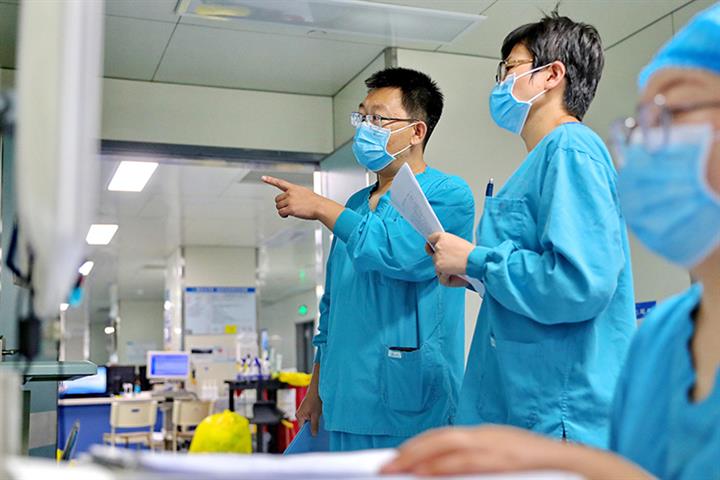 China’s Public Hospitals Face Financial Trouble, Loss of Staff Amid Pandemic
China’s Public Hospitals Face Financial Trouble, Loss of Staff Amid Pandemic(Yicai Global) Sept. 9 -- A large number of public hospitals in China have faced financial pressure in recent years, largely due to the pandemic, which has also exposed a number of internal management problems. A series of reforms have been taken in response, and hospitals are trying to develop new models in order to cope.
Twenty of the 31 provincial-level areas of China had a below-zero medical surplus in 2020, and 43.5% of tertiary public hospitals included in the statistics were in the red, up 25.9 percentage points from 2019, according to a report the National Health Commission published in July.
Another report from the commission showed that about 40 percent of the assessed secondary public hospitals made a loss in 2020. Public hospitals get most of their revenue from medical services and fiscal appropriation.
“We were in a situation where income and spending were narrowly equal," Chen Fen, head of a hospital in Anhui province, told Yicai Global. "Our concern was that such a delicate balance could be broken amid the uncertainty of Covid-19."
Chen said the hospital's expenditure has been increasing while its medical income has been falling in the last three years. In 2019, revenue was about 10 percent more than spending, with a surplus of about CNY60 million. The surplus fell to CNY10 million in 2020 and last year.
Many patients chose not to stay in hospital as hospitalization management procedures became more complex to reduce infection risks during Covid-19, Chen noted. Income from inpatient services used to be two times that of outpatient services. The falling hospitalization revenues have resulted in greater financial pressure since the pandemic.
In each year from 2015 to 2020, hospitalization revenue made up over 65 percent of public hospitals’ total income, according to the China Hygiene Health Statistical Yearbook 2021. Meanwhile, Covid-19 hit government income, making it hard to implement compensation mechanisms for public hospitals.
Brain Drain
Personnel costs have been rising, increasing in 2020 to 35.4 percent of the CNY4.2 trillion total spending of Chinese public hospitals, the yearbook said. For a public hospital, the average spending on staff in 2020 doubled from that of 2015.
Declining revenues at public hospitals has also impacted the salaries of healthcare workers amid the pandemic. Cash flow has been particularly tight in areas where there have been repeated outbreaks, and as a result some cut salaries to save money. This has led to numerous medical staff leaving their jobs.
"In our hospital, the proportion of personnel spending was about 38 percent to 40 percent," the director of a tertiary public hospital told Yicai Global, adding that the hospital has had to appeal to staff to stop them from leaving. Many public hospitals have not been able to hire new employees since the pandemic began, Chen said.
Looking to Break Even
After the experience of Covid-19, public hospitals generally hope the government can increase fiscal appropriation. "This is difficult, however, given that local government revenue is also under pressure," Zhuang Yiqiang, a consultant at Guangdong Province Hospital Association and director at Guangzhou Alibi Hospital Management Center, told Yicai Global.
The pricing of medical services should be more flexible, suggested Liao Zangyi, associate professor with the School of Political Science and Public Administration at the China University of Political Science and Law. He added that existing prices do not reflect the value of medical services and that public hospitals cannot set prices freely.
"In recent years, the growth of China's spending on medical treatment and public health has been slowing," said Chen Qiulin, deputy director of the Health Industry Development Research Center at the Chinese Academy of Social Sciences.
"But growth remained at a relatively high level, and in global terms, the spending-to-gross domestic product ratio is at a high level," he added. "So, we should reflect on why it is that amid such huge spending, public hospitals are still losing money."
The difficulties caused by the Covid-19 pandemic will drive public hospitals to directly face underlying development problems and establish a new input-output model in line with the direction of medical reform, said Chen Qiulin.
Editor: Tom Litting